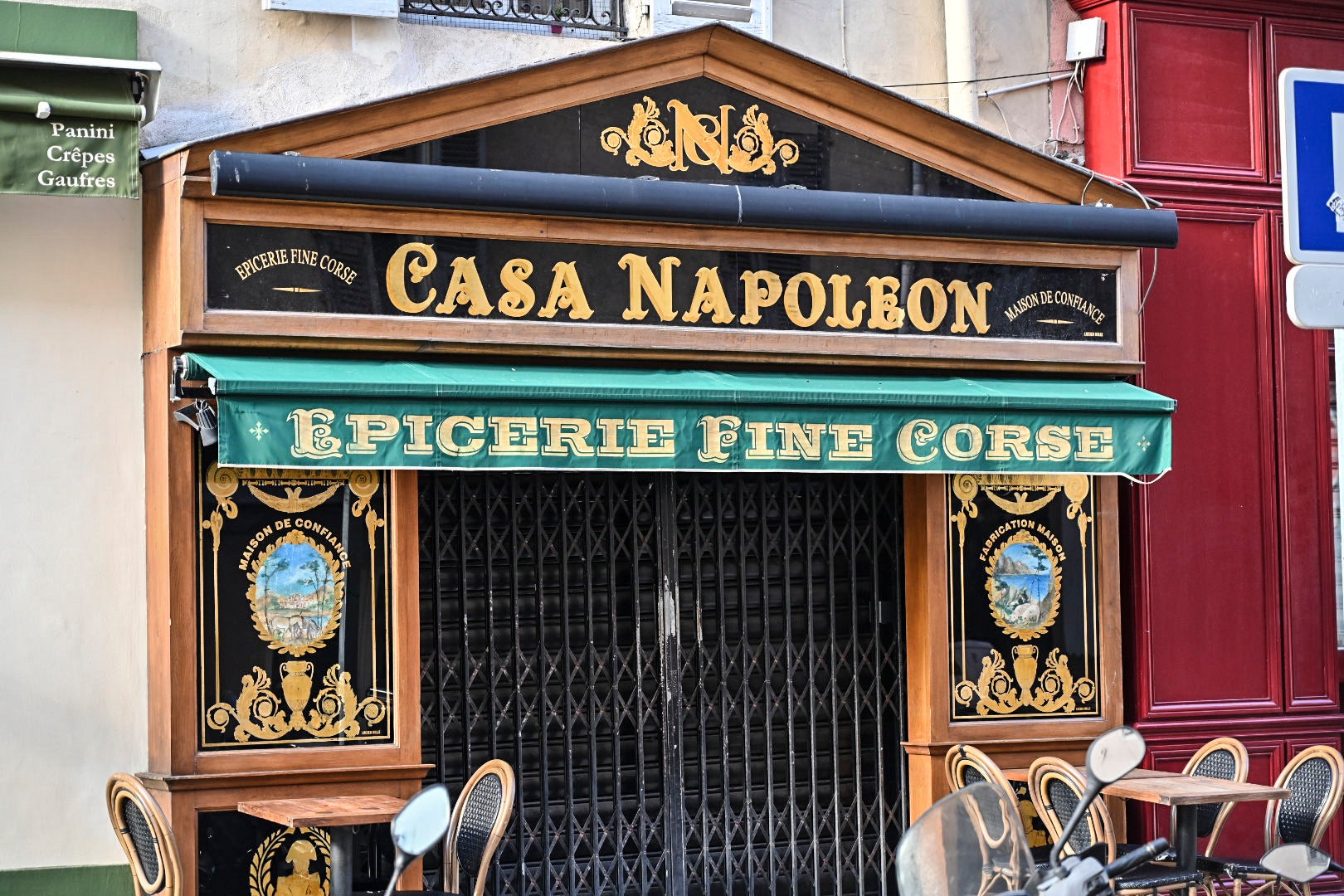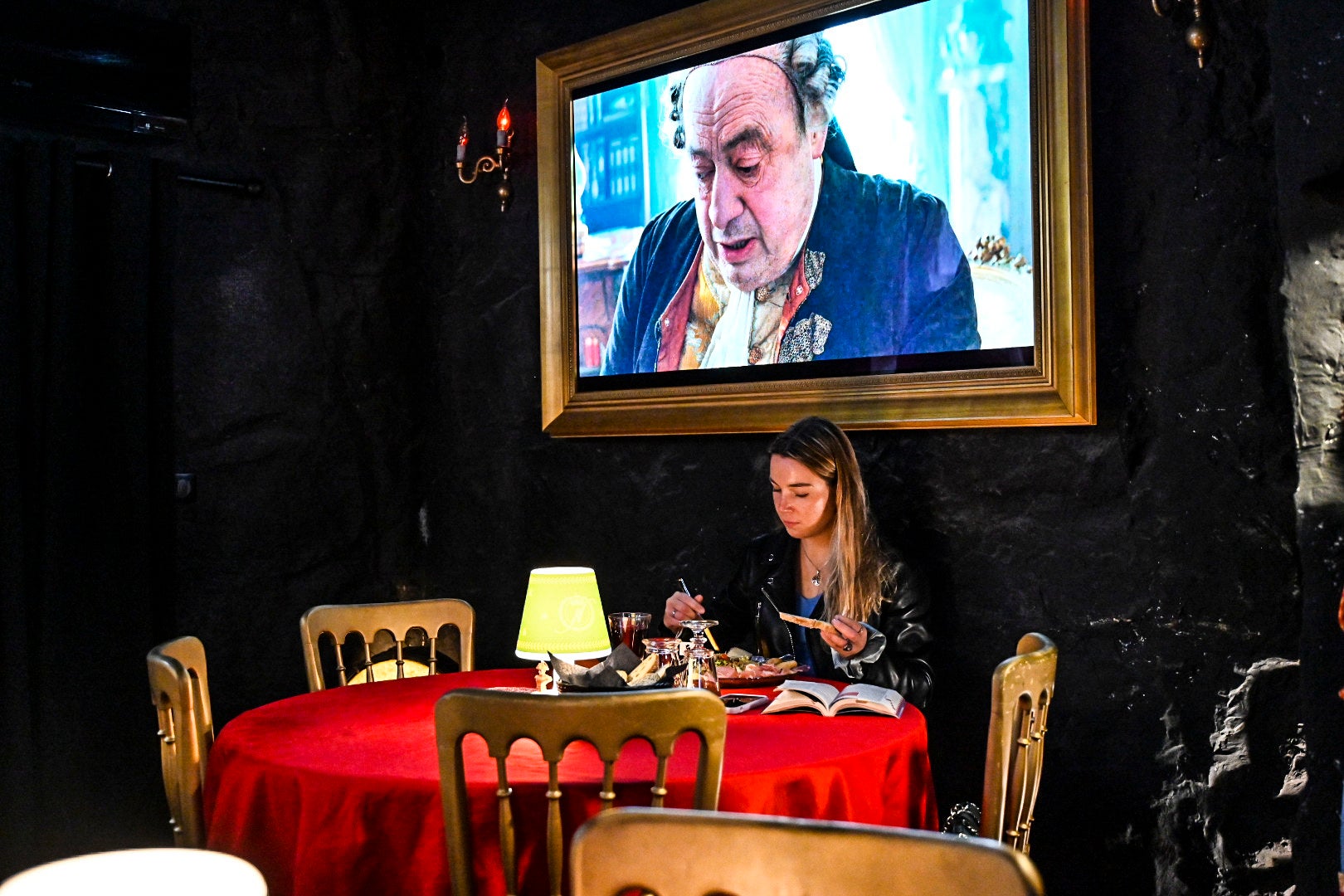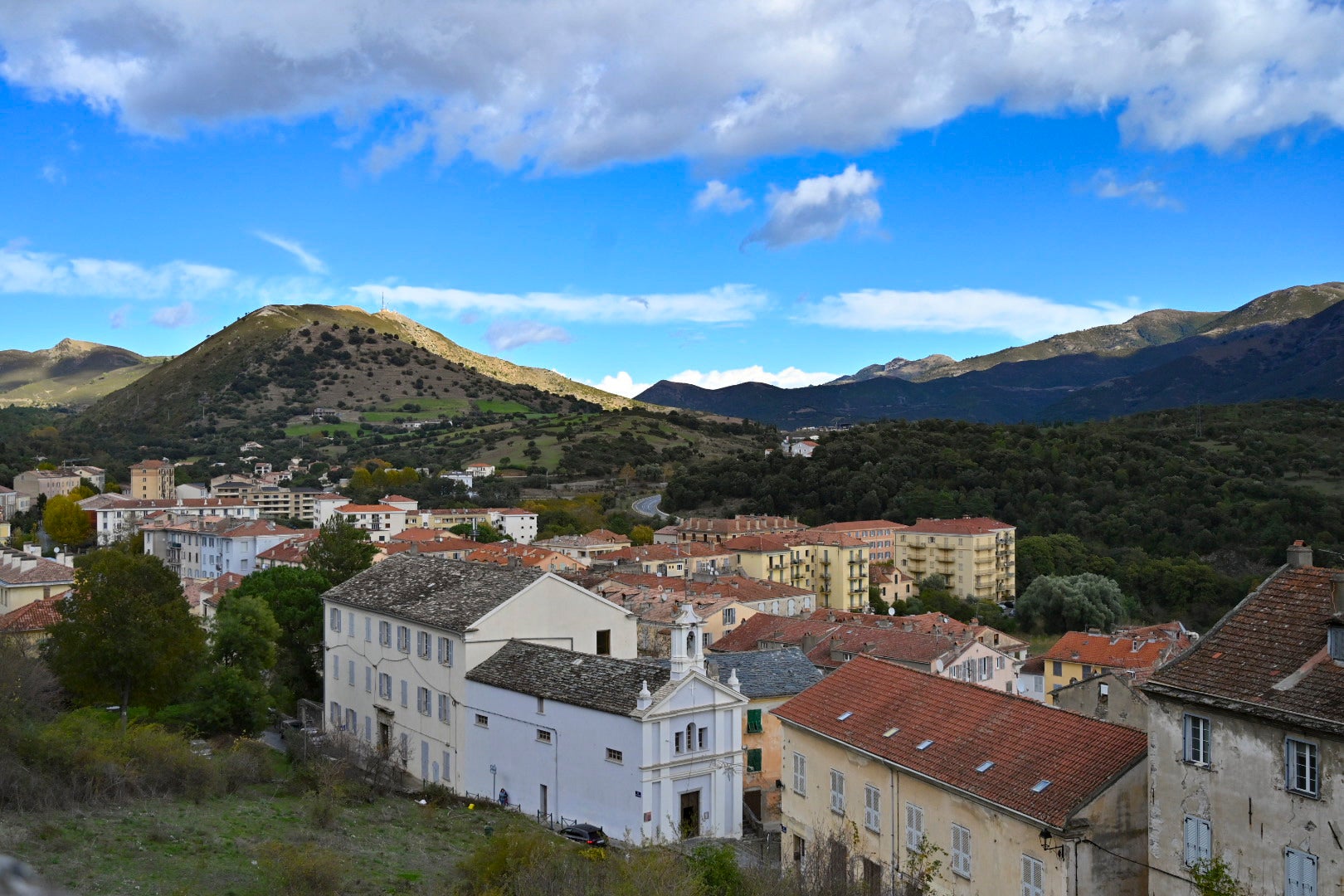How Corsica, Napoleon’s birthplace, fell out of love with the dictator – but his ‘trail’ is still worth a visit
With Ridley Scott’s epic conquering box offices, Mark Stratton travels to the emperor’s birthplace and discovers a beguiling Mediterranean jewel which is still divided over the legacy of their most famous son

Arriving late in Ajaccio, Corsica, at Aéroport Napoleon Bonaparte, I take a taxi to Hotel Napoleon. It’s a block south of the main thoroughfare, Cours Napoleon, where next morning I bask in the Mediterranean warmth with a croissant and double espresso at the Grand Café Napoleon.
A few doors away is a cinema advertising Ridley Scott’s new film, Napoleon, starring Joaquin Phoenix, which opened in UK cinemas this week. Napoleon Bonaparte was born in Ajaccio in 1769, yet if I imagined the density of public monuments here named after their prodigal son equated to popularity, I find his legacy divides Corsican opinion.
My local guide for a day, Catherine Lehmann, says Corsicans generally admire him but they do so through clenched teeth. “The movie trailer claims ‘he came from nothing and conquered everything’, but it’s not true as his parents were already an established noble family,” she complained. “He did nothing for Corsica during his time in power”.

Napoleon left Corsica aged nine to attend military school in mainland France, his first steps towards a megalomania that saw him crown himself emperor in 1804 and conquer much of Europe. The sights associated with him are within easy walking distance around Ajaccio’s Italian Genovese heart, known as the “Imperial City”.
Read more on France travel:
The state of Genoa occupied Corsica from the 13th century until the island’s absorption into France the year Napoleon was born. Ajaccio itself is rather lovely, its Napoleonic history interwoven with handsome fin de siecle architecture fronted by a bustling working port and beaches. “Everything shines, everything is colour, everything is light,” gushed Henri Matisse, who spent six months here in 1898.
Napoleon’s birthplace is now a three-storey museum called Maison Bonaparte. In 1769 the house possessed a single storey where the Bonaparte family lived, his parents Charles-Marie and Letizia and eight children. In one room is a sedan chair upon which his mother was ferried back while in labour but, unable to reach the bedroom, she gave birth to Napoleon on the floor.

“He claimed he popped out onto a motif of Achilles and was therefore destined to be a great warrior. But they had no such carpet,” dismissed Catherine. Two extra storeys and a walnut-parquet floored ballroom were added by Letizia in 1796 as Napoleon’s fortune burgeoned across Europe. Catherine concedes that there was local admiration for the dashing young general’s exploits conquering Italian and Austrian armies at the time. “But he had little interest in returning and only came back for one week to this house in 1799: his last visit to the island”.
We spend several hours visiting statues glorifying him. On Piazza Foch, he is sculpted as a Roman emperor, toga and all, and surrounded by lions. On Place de Gaulle, he’s on horseback alongside his four brothers: Joseph, Lucien, Louis, and Jerome. Most impressive is Piazza Carsone, where a large bronze bears his trademark greatcoat and bicorne-hat atop a stepped pyramid. Catherine takes me behind the statue to a little cave where he played as a boy. The Napoleon bronze is a replica of the one that tops the Vendôme column in Paris.
Our lunch is at the eccentric La Grotte de Napoleon dipoi 1769, where owner José Caneggiani has just five tables – plus a waiter dressed as Napoleon. Diners are treated to four short films about Bonaparte’s childhood and achievements during glasses of Corsican wine and island charcuterie, including wild boar pate.

Despite this immersive Napoleonic deep-dive, José, like most Ajaccienes I speak with, is somewhat coy about him. “You cannot go out of context in judgement of him,” he said. “He did good and bad things. He was a dictator but left behind progressive things like today’s legal system, the Code Napoleon.”
His justice reforms certainly didn’t curtail chronic nepotism. Napoleon’s uncle Joseph Fesch grew wealthy and rose to the position of cardinal under the emperor’s patronage. But this was excellent news for Ajaccio. Fesch collected 17,000 art treasures during his life and bequeathed many to a sumptuous neoclassical palace museum completed in the 1830s. The ground floor hosts busts and paintings of the Bonaparte clan but upstairs is one of Europe’s finest collections of early Italian painters. Artists include Botticelli and in 2010, when repairing a frame, a conservator deduced one particular portrait was painted by the 16th-century Venetian maestro, Titian.
It’s fair to say that the brushstrokes of interior Corsica are equally beguiling. I couldn’t do Corsica justice without venturing into mountains hosting one of Europe’s greatest hiking trails, the GR20, so I take a two-hour ride from Ajaccio to Corte by slow train which costs €11.50 each way. The breathtakingly wild journey climbs through tunnels and primary forest and over arched bridges spanning aquamarine meltwater rivers. At one stage a large wild boar appears alongside the track.

Like a medieval bird’s nest, Corte sits among commanding granite rockfaces exuding an air of impregnability. Its walled 15th-century fortress contains nebulous cobbled lanes and ancient adobe buildings, one of which was the nationalists’ parliament after Corsica proclaimed independence from Genoa in 1755, only to be subjugated by the French in 1769. I came looking for a house called Arrighi de Casanova, where Napoleon’s parents lived and raised his brother, Jerome. But instead, I found Corte has its own hero, Pascal Paoli, who led Corsica to independence and eventually died in exile in London in 1807.
He’s revered here because during his brief rule, he constituted numerous educational and political reforms, including female suffrage. In Corte the main street is called Cours Paoli, there are statues dedicated to him, and many cafes and restaurants named after him. In contrast, there’s scant reference to Napoleon. The Bonapartes were personae non gratae here because Napoleon’s father sided with the French as Corsica’s fleeting independence failed.
Near a large statue of Paoli, a restaurant serves typical Corsican dishes of lamb and veal. My waiter said they don’t care for Napoleon here because his family were traitors to Corsican nationalism.
So, you won’t go to see the movie, I asked? He looked surprised. “Of course, I will,” he responded. “Napoleon’s good for business, even here.”
Travel essentials
Corsican Places has two nights at Les Mouettes, a four-star beachside hotel in Ajaccio, from £350pp, B&B, when added to any of its self-catering or hotel-based holiday packages. Includes travel; corsica.co.uk.
Read more on the best hotels in Europe
Join our commenting forum
Join thought-provoking conversations, follow other Independent readers and see their replies
Comments